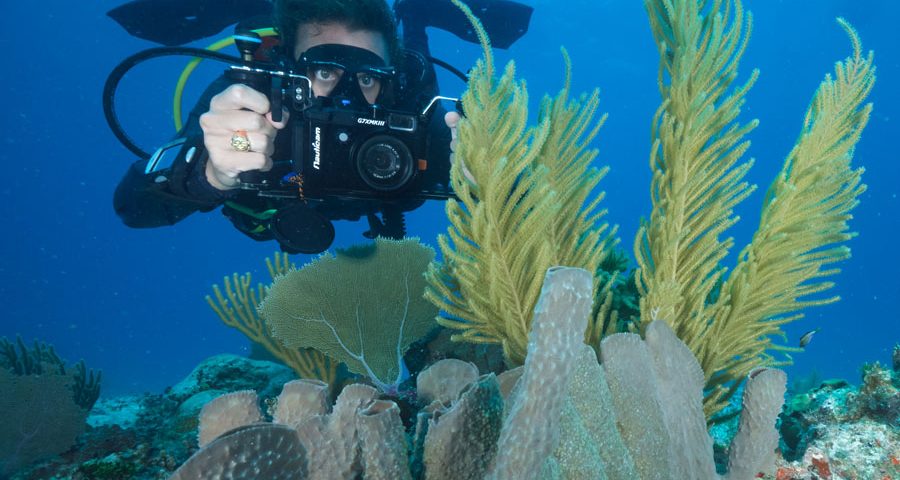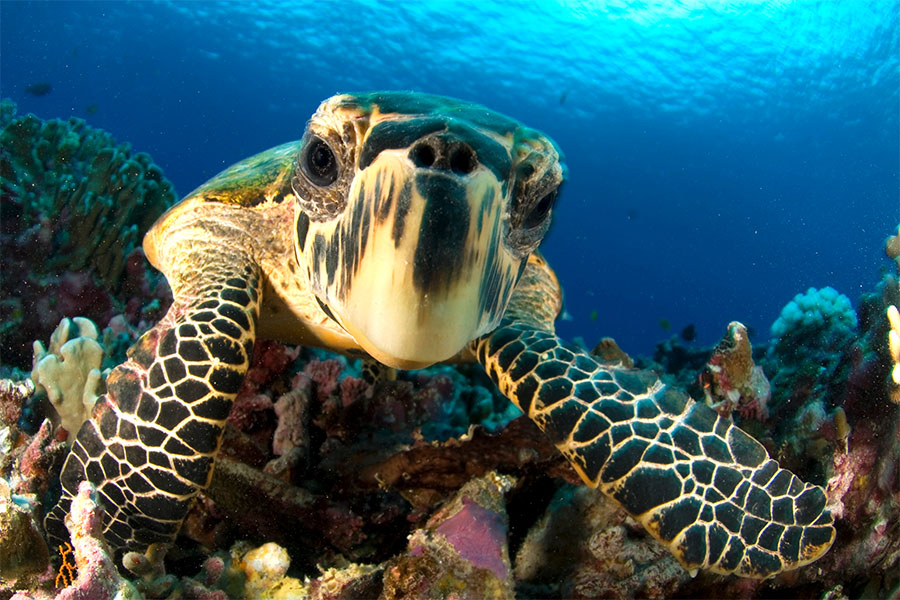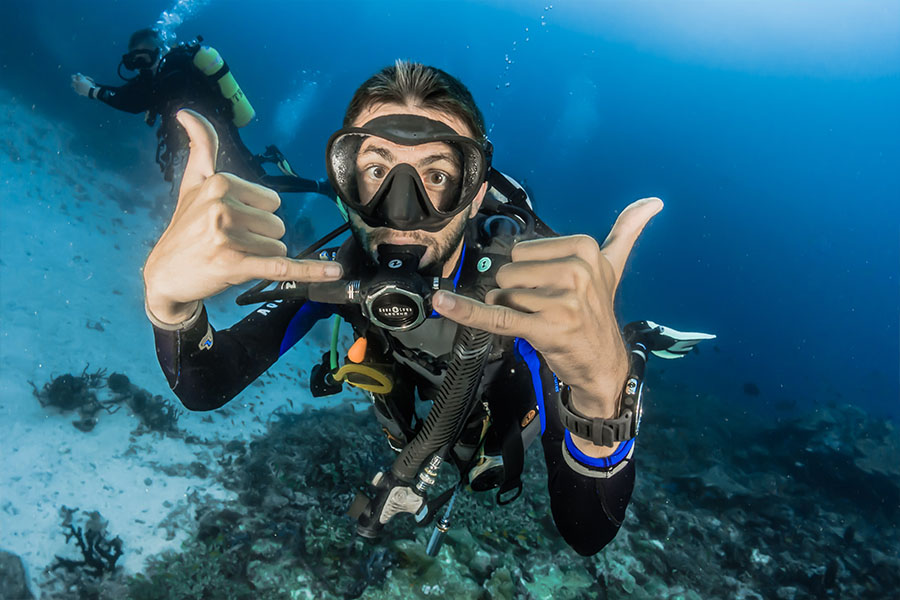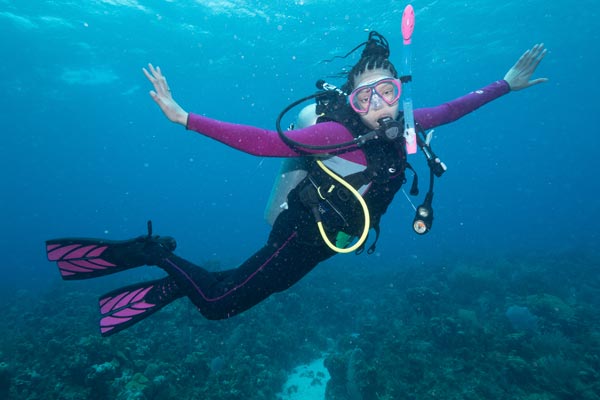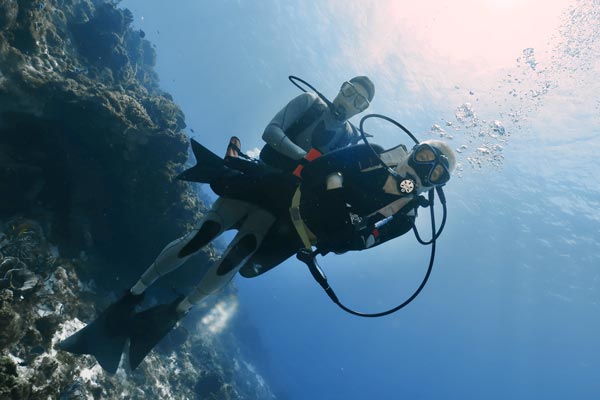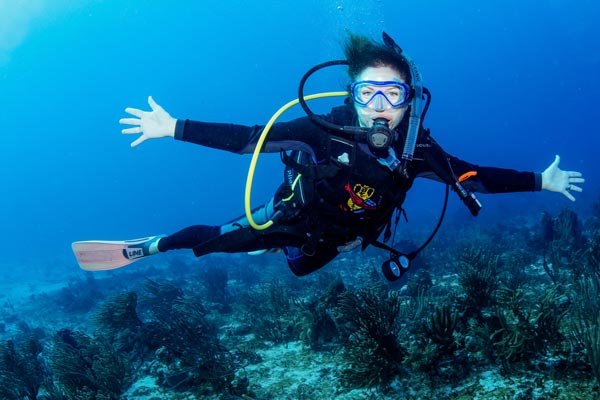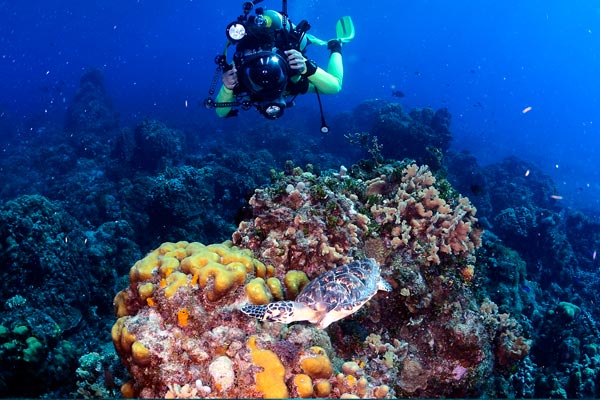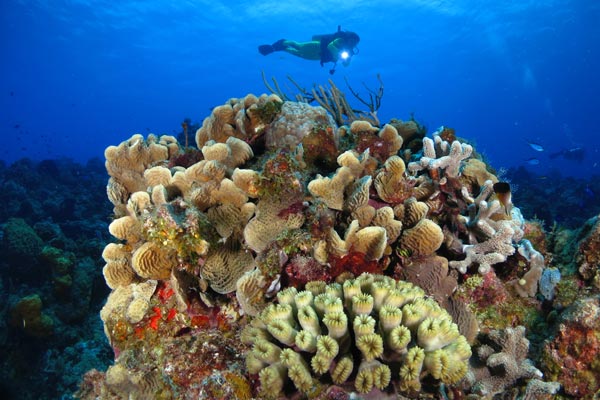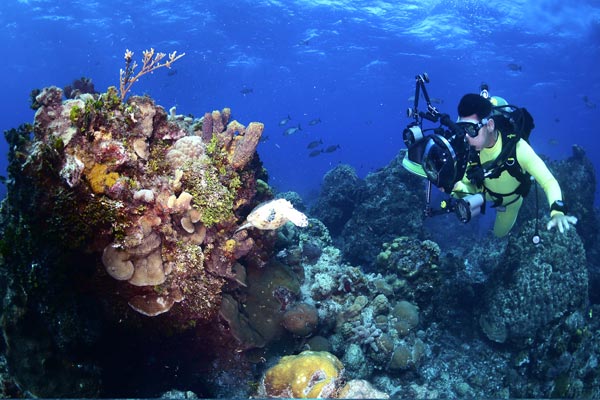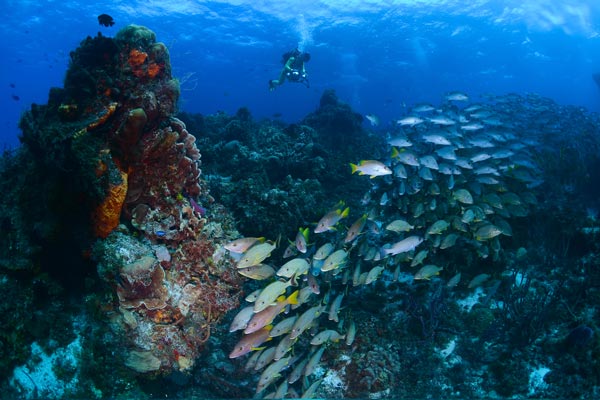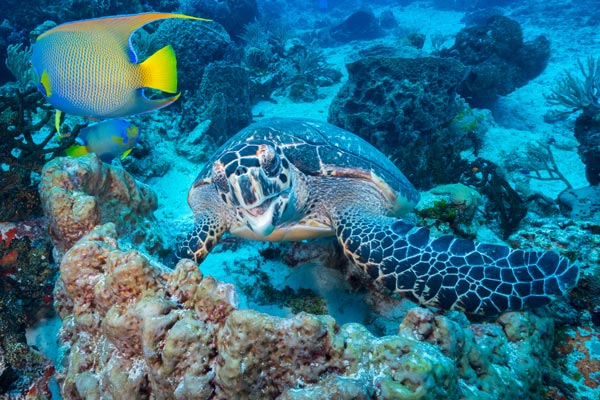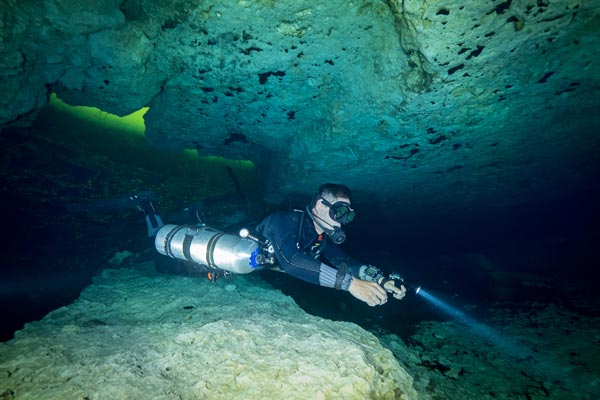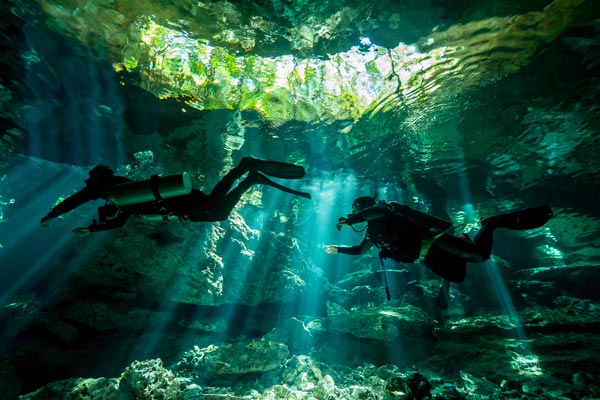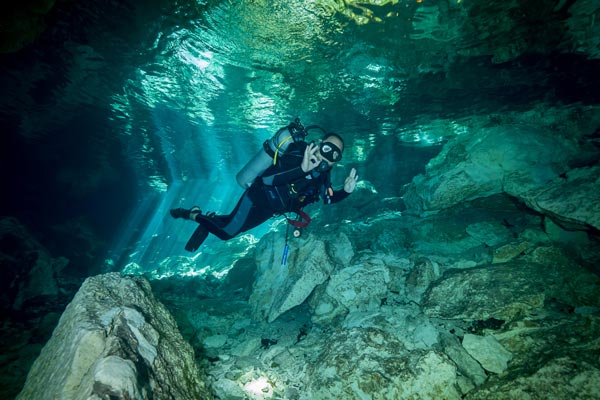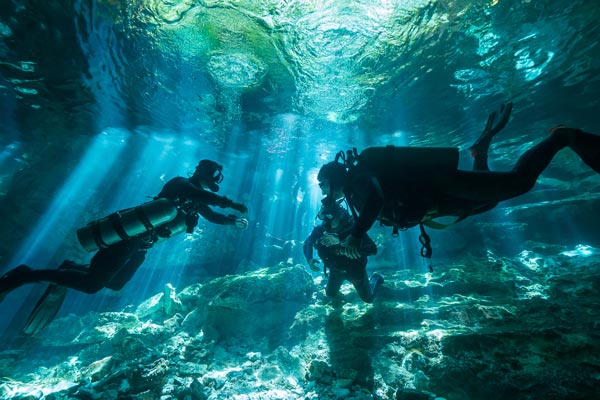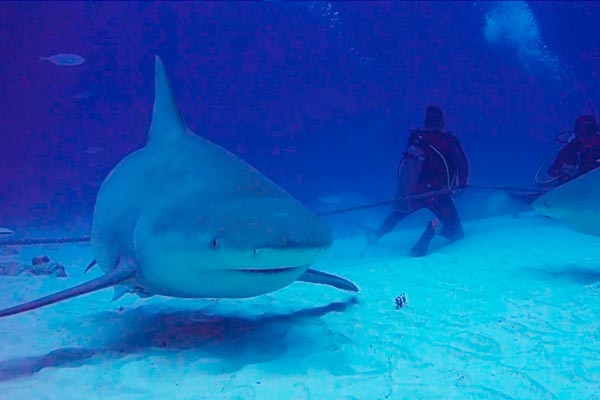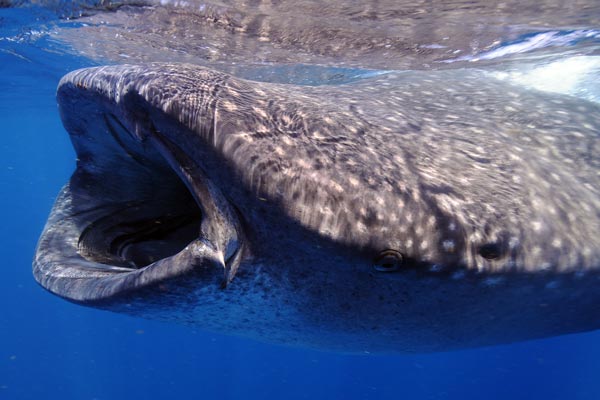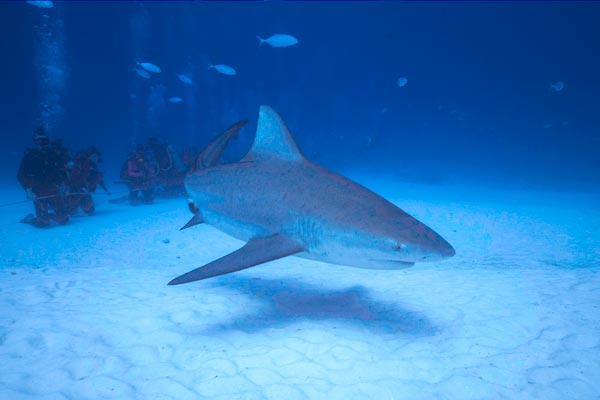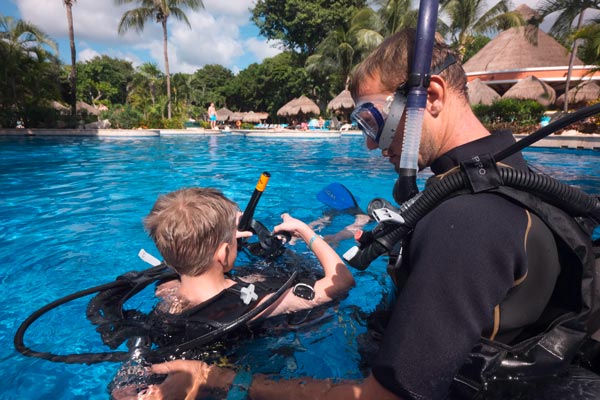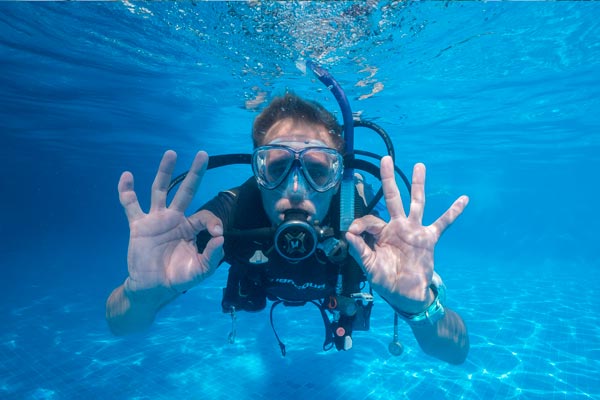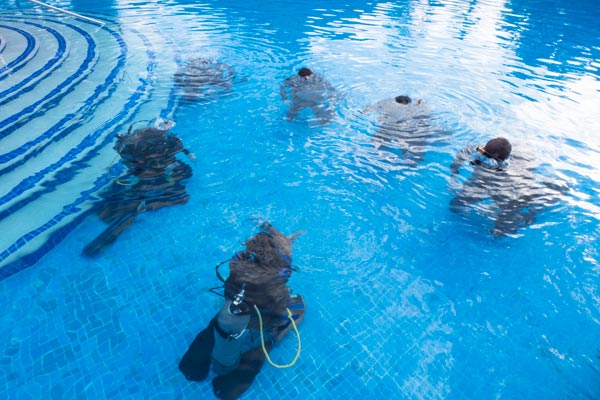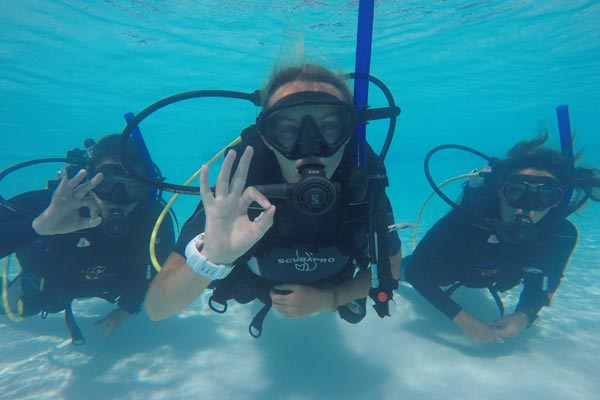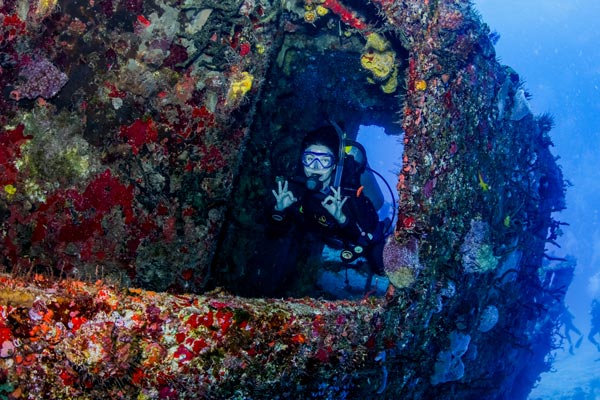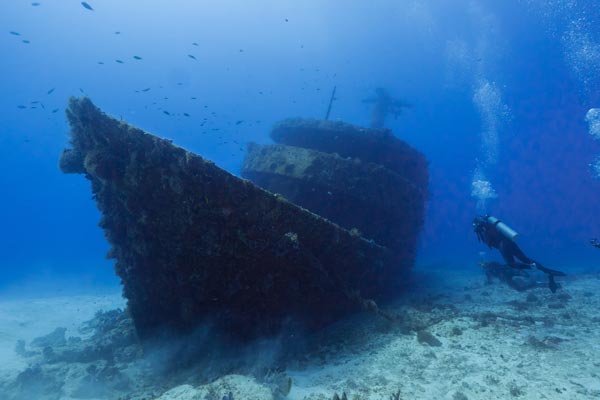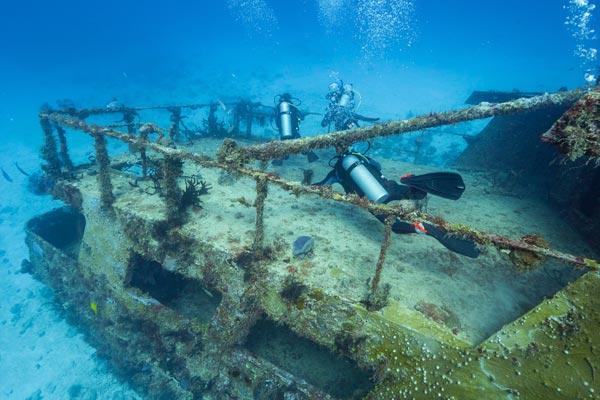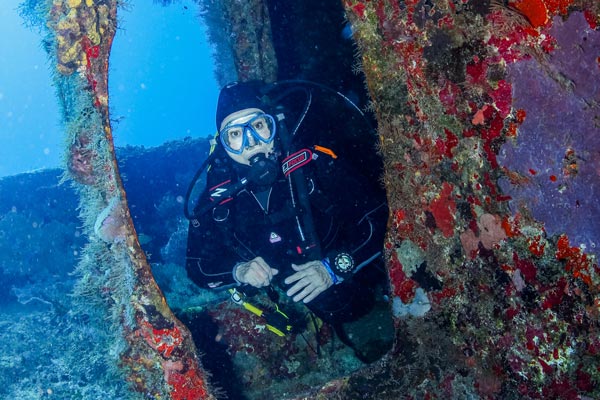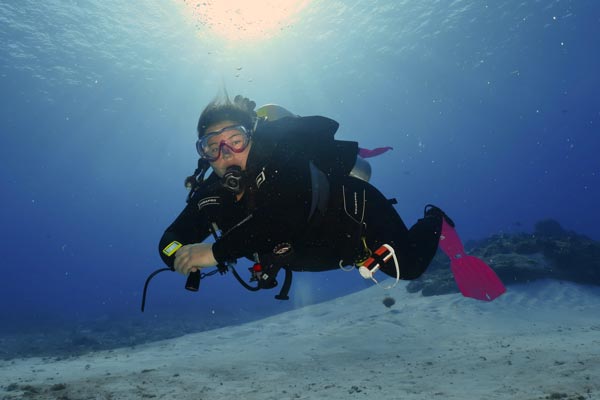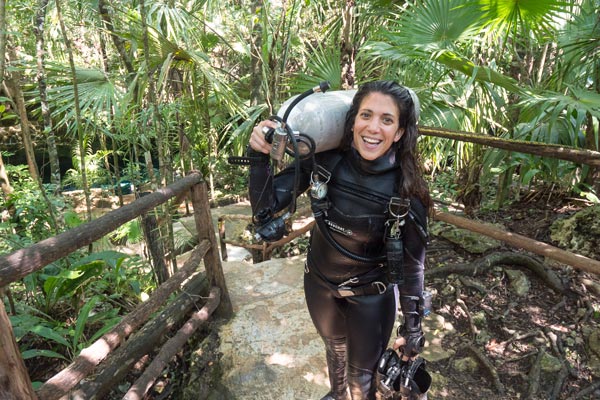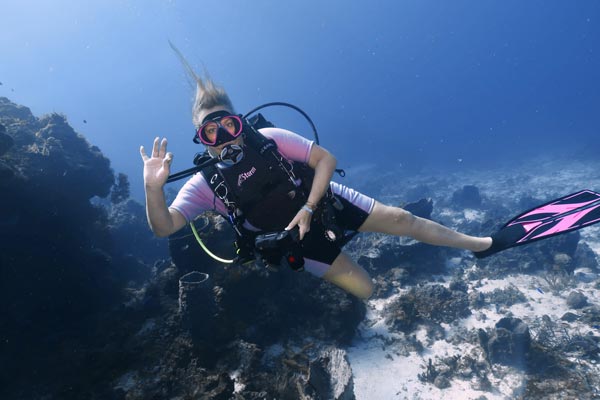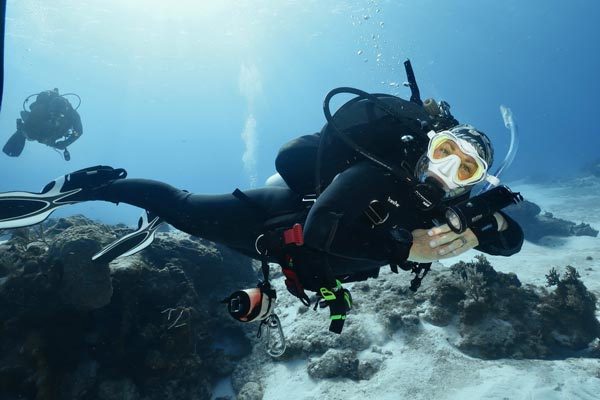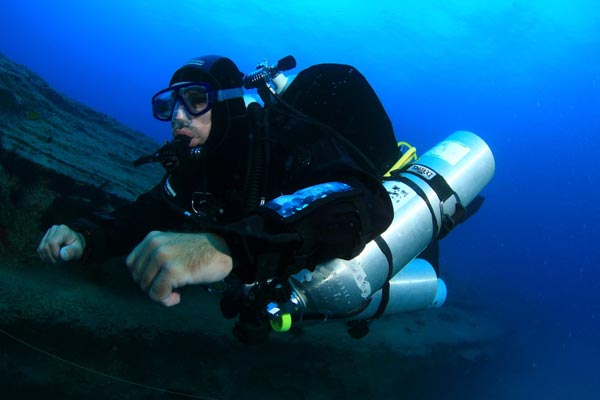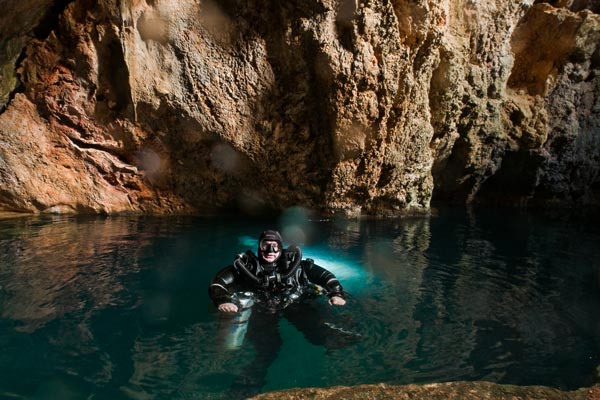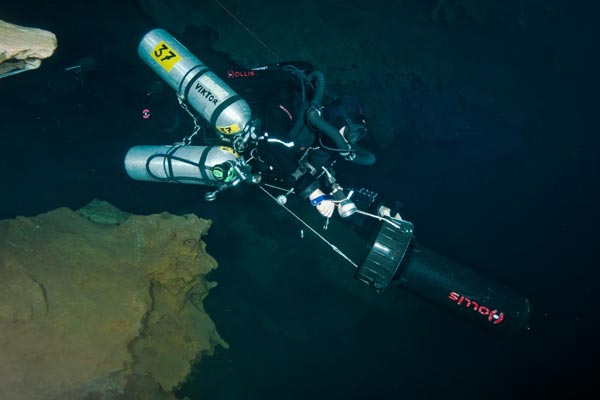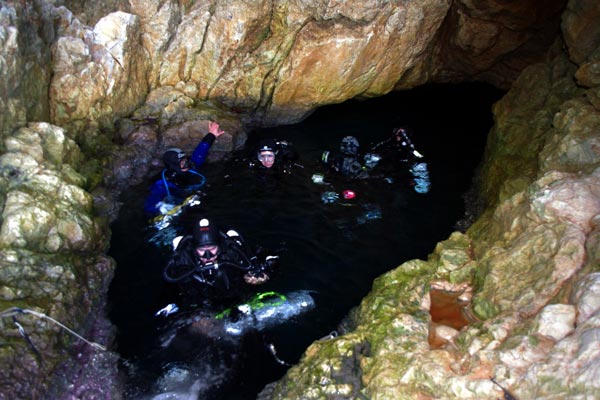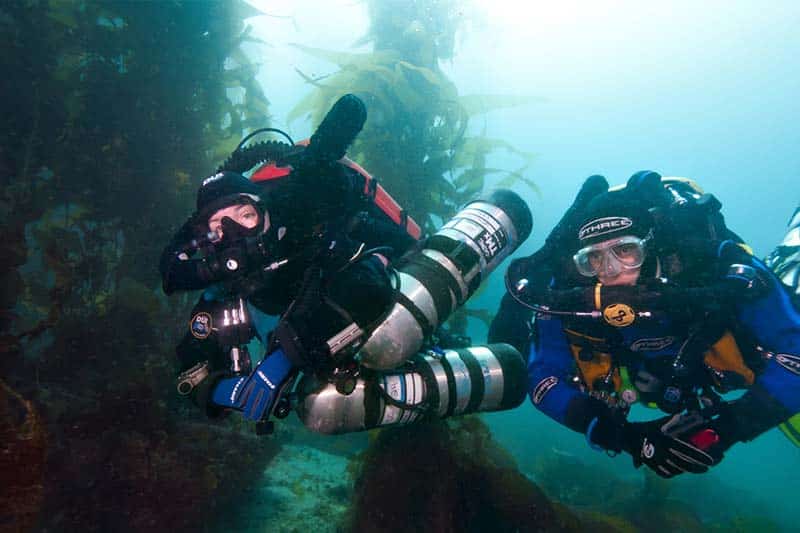2. Scuba Diving Pictures Depend More on Accessories Than on A Good Camera
According to our videographers, it is better to carry a simple camera with excellent lenses and a great flash than an expensive camera.
The lenses most commonly used in underwater photography are macro lenses, with which we can photograph tiny animals very close to them, and wide-angle lenses that focus very close to larger objects or animals, even if we are not so close. Some professionals use close-up lenses, which work like magnifying glasses to obtain better details.
On the other hand, there is no good diving photography without flash. Well, there is, but it’s done by snorkelers. Look closely and you will see how professional photographers carry two flashes, one on each side of the camera. Their function is not only to illuminate what can’t be seen but also to recover the color palette. The progressive lack of light caused by the depth of field will eat away the colors and this requires that we illuminate what we want to immortalize. Otherwise, all the snapshots will be a monotonous greenish-blue color.
If you take photographs at shallow depths, you can take advantage of natural light, which is always a magnificent resource. But also, something to keep in mind. Remember, in a fish backlight, you’ll need to use a flash to make more than just the silhouette show.
Color-correcting filters are another important element. As their name suggests, they help to mitigate the color casts caused by the water by filtering out the blue tones. A little tip: to have a lot of editing capacity afterward, it is worth taking the dive pictures in RAW format.




